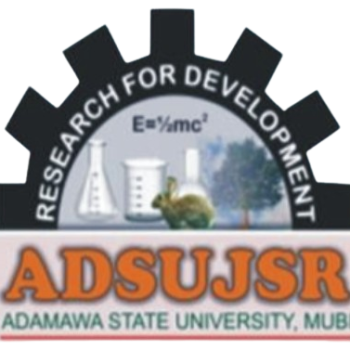Abstract
Heavy metals are commonly found in soils polluted with contaminants from anthropogenic sources. Bio sorption is a passive mechanism of heavy metal removal by dead or living biomass and it is a relatively inexpensive means of bio remediating contaminated soils and water. In this study, the role played by three organic wastes in removing heavy metals in a soil contaminated by spent engine oil was assessed. The study investigated the initial concentration of some heavy metals in soil collected from a mechanic workshop in Minna, Niger State, Nigeria. Chicken droppings, cowpea haulms and groundnut haulms were added to the contaminated soil for twelve weeks and concentration of the heavy metals was monitored by taking readings every two weeks. Another soil was left untreated, to serve as control. Contaminated soil was collected from Keteran Gwari mechanic workshop and amended with sterile chicken droppings, cowpea haulm, and groundnut haulm. Another portion of the soil was left untreated to serve as control. This study was carried out for a period of twelve weeks under laboratory conditions. Samples were taken from each treatment at two weeks interval to determine concentration of heavy metal. The result obtained revealed high concentration of lead, chromium, Cadmium, arsenic, zinc, copper and Nickel in the contaminated soil. At the end of the bioremediation, the concentration of heavy metals was still above the acceptable limits (NESREA, 2007; WHO, 2007; WHO, 2011). There was a significant difference in the reduction of lead, chromium, arsenic, zinc and copper (p0.05) The chicken droppings contain Nitrogen (1.16%), Phosphorous (17.44mg/kg) and 12.34% organic carbon, cowpea haulms contains 1.10%,11.20mg/kg and 10.21% nitrogen, phosphorous and organic carbon respectively, while the groundnut haulms had 0.89% nitrogen, 11.92mg/kg phosphorous and 10.41% organic carbon. The content of nitrogen, phosphorous and organic carbon in the organic wastes used to treat contaminated soil in this study; possibly improved the activities of bacteria which lead to increase in their population hence reduced the concentration of heavy metals through a mechanism called biosorption. During biosorption, heavy metal ions directly bind to the organic wastes thereby reduces their concentration in soil. The used of organic waste to stimulate the activities of microorganisms during bioremediation is cost effective, efficient and environmentally friendly, hence can complement the use of expensive inorganic fertilizer and conventional methods that are expensive and also generate toxic byproducts which adversely affect the environment.

